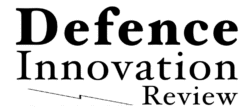South Korea’s shrinking military workforce, driven by a decades-long decline in birth rates, is forcing a strategic pivot in defence planning. The country’s armed forces have reduced by 20% over the past six years, from 563,000 personnel in 2019 to around 450,000 today. This demographic crisis, compounded by a shrinking pool of conscripts and waning interest in military careers, is reshaping South Korea’s defence posture amid rising regional tensions.
The implications are profound. “If the size of the active army continues to decline, difficulties in supplying elite personnel and limitations in the operation of equipment may arise,” warns a recent report by legislator Chu Mi-e. The challenge is not just numerical but structural. South Korea’s defence strategy has long relied on a large, technologically advanced force. However, as the population ages and the working-age population shrinks, maintaining that balance becomes increasingly difficult.
Across the border, North Korea faces its own demographic and economic strains. While its birth rate remains higher than South Korea’s—1.77 compared to 0.75—the regime grapples with severe economic challenges and international sanctions. North Korea’s military advantages, such as longer service terms fostering unit cohesion, are offset by technological inferiority and a weaker economic base. “South Korea unquestionably leads North Korea in conventional weapons,” says Choi Byon-uk, professor of national security at Sangmyung University. “Our forces have become smaller, but I like to say: ‘small but strong army’—that is exactly what we need to become.”
The demographic divide between the two Koreas extends beyond birth rates. South Korea’s reserve force stands at around 3.1 million, a potential mobilisation asset bolstered by the presence of 28,500 U.S. troops. North Korea, meanwhile, relies on mass mobilisation and increased female participation to fill gaps, but economic constraints limit its long-term sustainability.
For South Korea, the path forward lies in technological innovation and a reimagined military culture. The government has taken steps to ease restrictions on conscripts, but deeper reforms are needed to improve morale, training, and career incentives. “We need to improve social conditions and morale in the military as a whole,” Choi Byon-uk emphasises. “Maintaining the current army size will become increasingly difficult due to further population decline.”
The shift towards a smaller, more technologically advanced force mirrors global trends. Ukraine’s experience in combining technological superiority with high-quality units demonstrates that numbers alone do not determine victory. South Korea is poised to follow this model, investing in drones, cyber defence, autonomous systems, and artificial intelligence to compensate for human resource shortages.
Yet, the human factor remains critical. South Korea must cultivate a military culture that fosters professionalism, adaptability, and resilience. “Personally, I do not agree with the view that we need a large army, because North Korea has one,” Choi Byon-uk states. “Our forces have diminished, and increasing them is almost impossible… I believe we should view this crisis as an opportunity, because South Korea is on the path to becoming a technological nation.”
By the 2040s, even maintaining 350,000 troops will be a challenge, according to defence experts. The solution lies in optimising staffing structures, enhancing training, and integrating cutting-edge technologies. South Korea’s defence future will depend on its ability to merge technological innovation with a highly skilled, motivated force—ensuring resilience in an increasingly volatile region.
